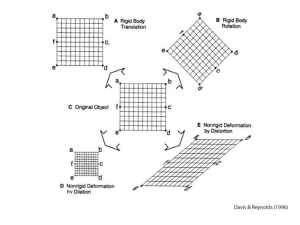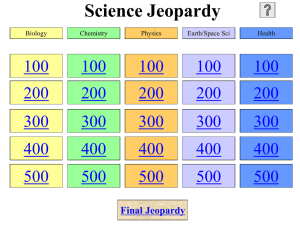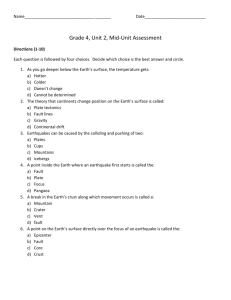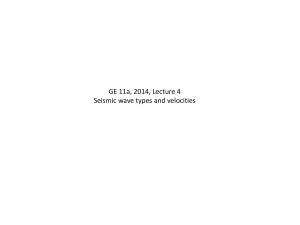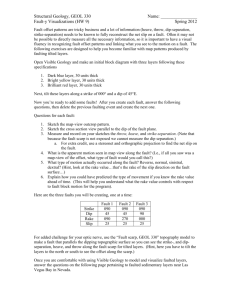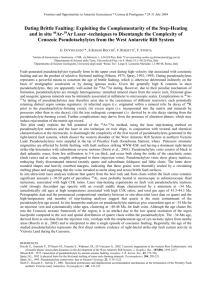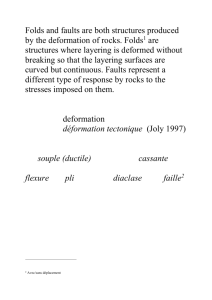Seismic moment tensor and b value variations over successive
advertisement
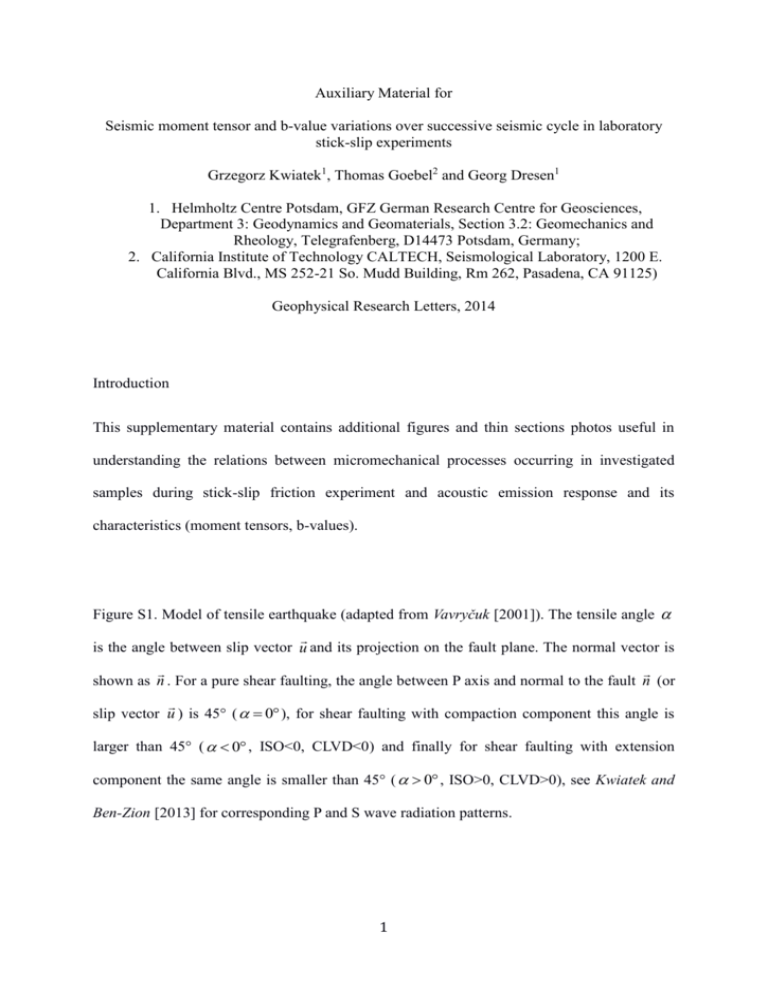
Auxiliary Material for Seismic moment tensor and b-value variations over successive seismic cycle in laboratory stick-slip experiments Grzegorz Kwiatek1, Thomas Goebel2 and Georg Dresen1 1. Helmholtz Centre Potsdam, GFZ German Research Centre for Geosciences, Department 3: Geodynamics and Geomaterials, Section 3.2: Geomechanics and Rheology, Telegrafenberg, D14473 Potsdam, Germany; 2. California Institute of Technology CALTECH, Seismological Laboratory, 1200 E. California Blvd., MS 252-21 So. Mudd Building, Rm 262, Pasadena, CA 91125) Geophysical Research Letters, 2014 Introduction This supplementary material contains additional figures and thin sections photos useful in understanding the relations between micromechanical processes occurring in investigated samples during stick-slip friction experiment and acoustic emission response and its characteristics (moment tensors, b-values). Figure S1. Model of tensile earthquake (adapted from Vavryčuk [2001]). The tensile angle is the angle between slip vector u and its projection on the fault plane. The normal vector is shown as n . For a pure shear faulting, the angle between P axis and normal to the fault n (or slip vector u ) is 45° ( 0 ), for shear faulting with compaction component this angle is larger than 45° ( 0 , ISO<0, CLVD<0) and finally for shear faulting with extension component the same angle is smaller than 45° ( 0 , ISO>0, CLVD>0), see Kwiatek and Ben-Zion [2013] for corresponding P and S wave radiation patterns. 1 Figure S2. Photo of the damage zone in S2cut sample displaying the fault topography is much smoother in the saw-cut sample. The cumulative slip on this plane resulted in the creation of a thin (<2 mm) gouge layer likely related to the fracture of fault asperities. Figure S3. a) Spatial distribution of fault planes of AEs calculated from deviatoric part of the MTs for the saw-cut sample S2cut (the plane was selected based on its proximity to macroscopic fault plane). Orientations of the fault planes calculated from the deviatoric part of the moment tensors b) Same fault planes together with the directions of P axes (cf. Fig 4) showing steep P axis plunges. Figure S4. Frequency-magnitude distribution for rough surface sample (cf. Fig. 3a in the manuscript). The distribution follows clearly the power-law behavior. Figure S5. a) Comparison of frequency-magnitude distributions for post- and pre-slip periods for rough surface sample S1frac (cf. Fig. 3a). The post-slip periods are characterized by increased AE activity. b) Dependence between AE magnitude and percentage of ISO component (cf. Fig. 3b). No significant change in non-DC components is observed with AE magnitude. Note that the AE magnitude is specific to the here employed transducers and is not calibrated in an absolute sense. Figure S6. Schematic representation of a shear-dominated micro-crack (a) and a micro-crack that shows both compaction and shear contribution in the corresponding MTs (b). Note the tensile angle is measured relatively to the fault plane whereas the P plunge is defined with respect to the coordinate system of the sample as an angle between P axis direction and plane perpendicular to the loading axis. Figure S7. Photo of the damage zone developed in rough surface sample S1frac. Progressive sliding along the fault with pronounced topography involves dilation and compaction of the 2 fault zone and shearing along the anastomosing and localized slip bands within the fault damage zone. 3


